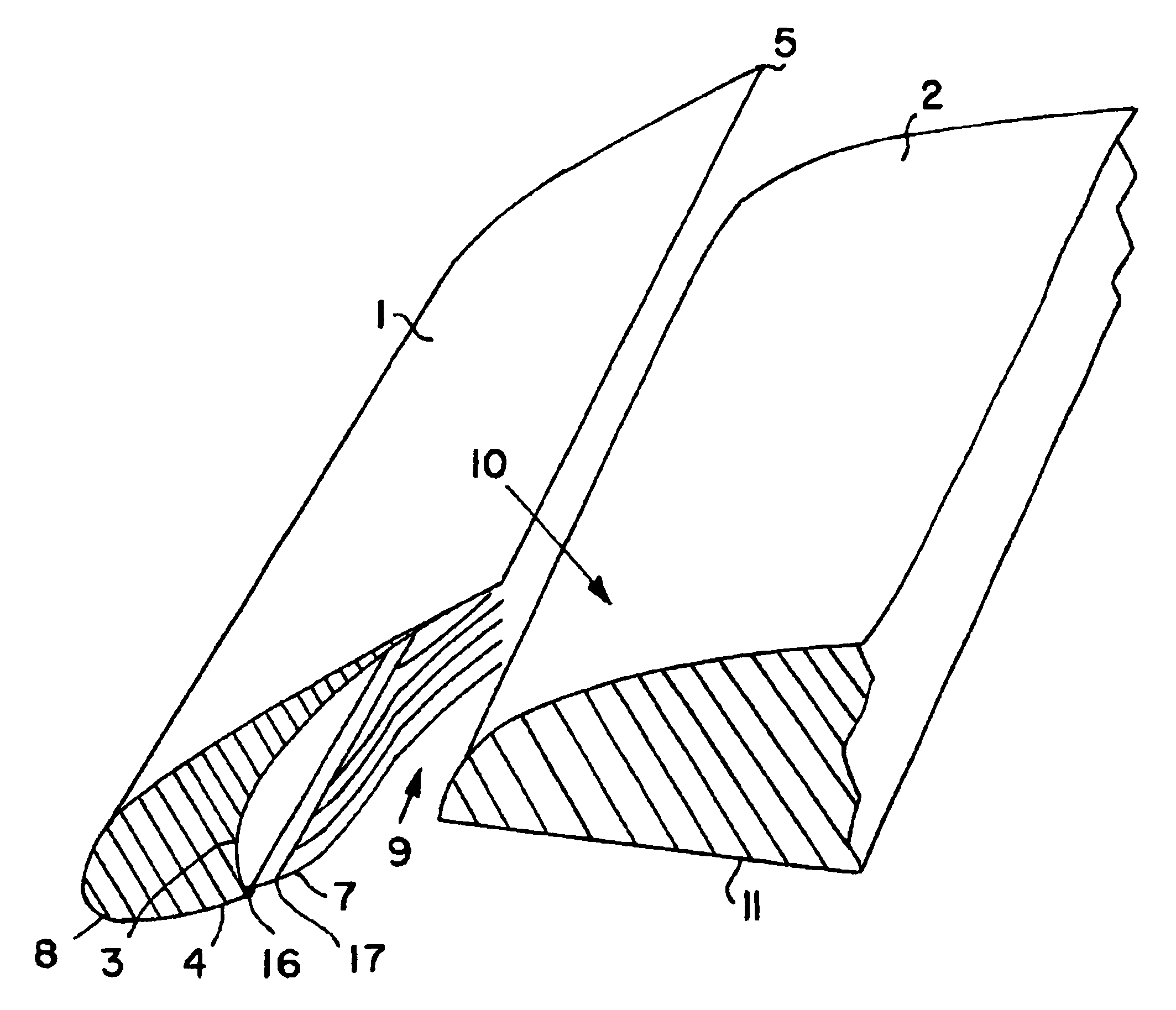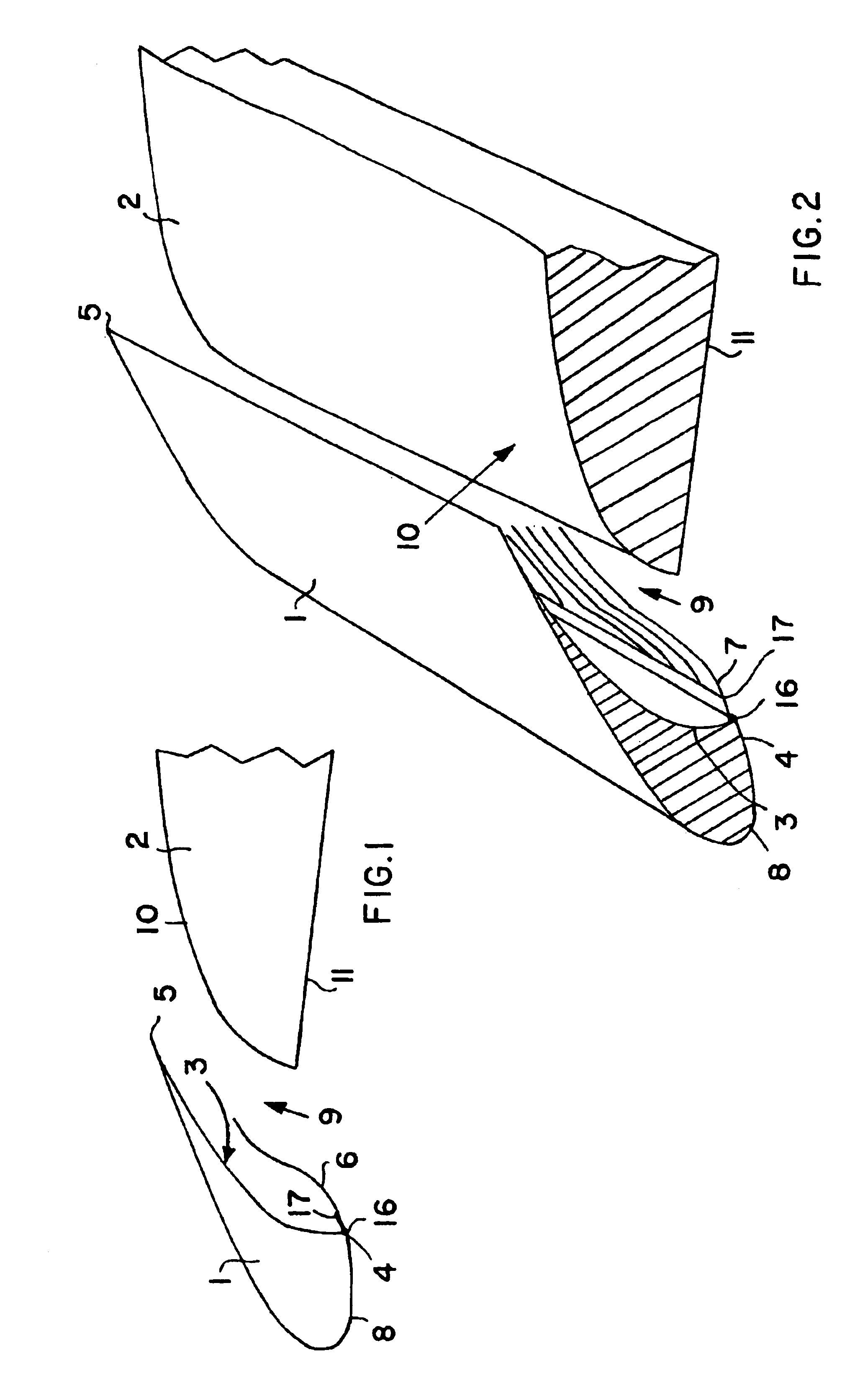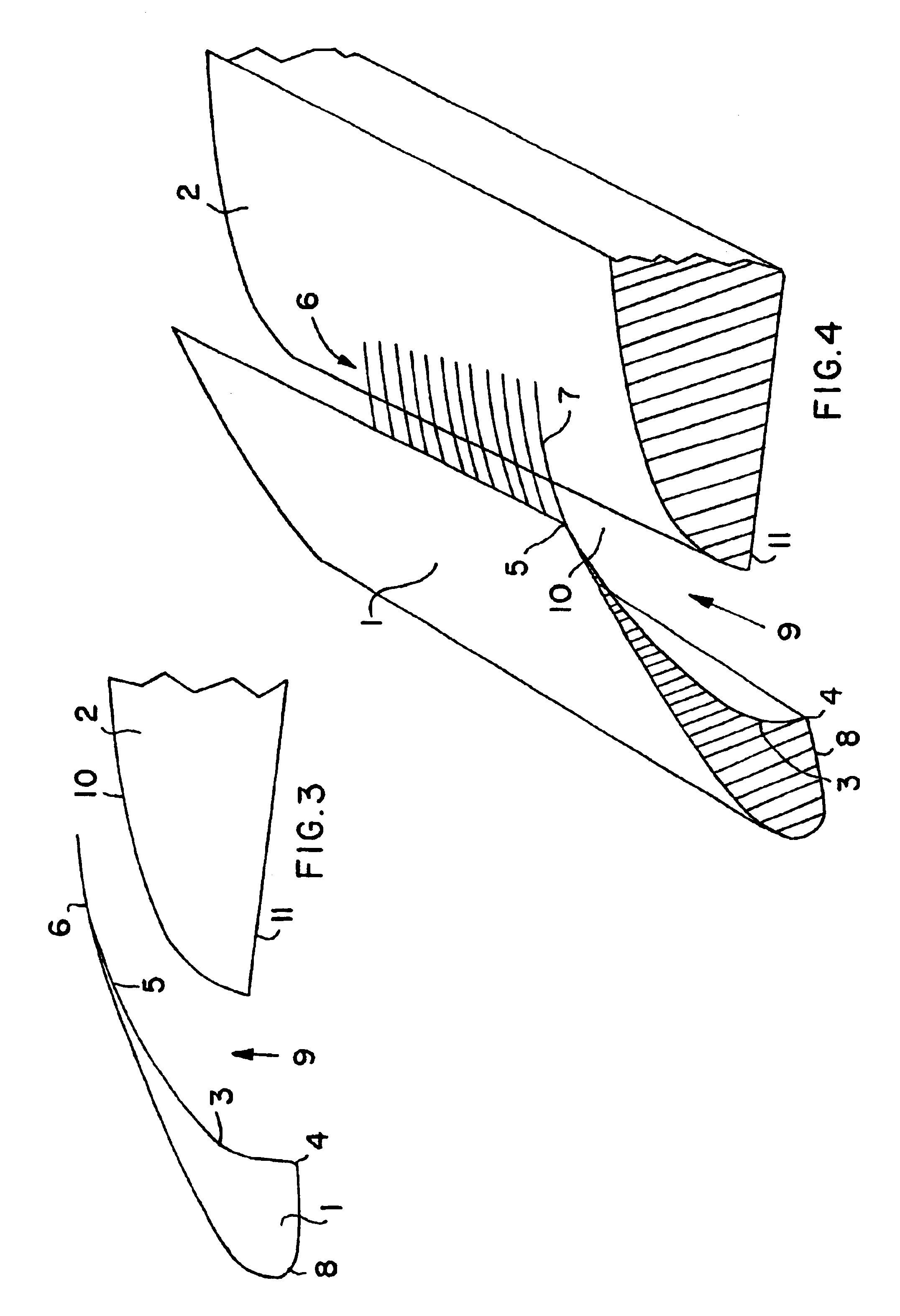Flexible airflow separator to reduce aerodynamic noise generated by a leading edge slat of an aircraft wing
a technology of leading edge slats and airflow separators, which is applied in the direction of airflow influencers, fuselages, transportation and packaging, etc., can solve the problems of aerodynamically generated slat gap noise that can reach or exceed the noise level magnitude of jet engines, and the effect of vortex noise is significant potential noise sour
- Summary
- Abstract
- Description
- Claims
- Application Information
AI Technical Summary
Benefits of technology
Problems solved by technology
Method used
Image
Examples
Embodiment Construction
For a general background understanding of the aerodynamic noise generation that is to be addressed by the present invention, reference is first made to FIG. 9, showing a conventional wing arrangement. As shown in FIG. 9, a conventional wing arrangement includes a leading edge slat 1 extended forwardly from the forward nose of a main wing body 2, for example of a commercial passenger transport aircraft. The slat 1 has a concave rearward surface 3, while the forward nose of the main wing body 2 has a convex surface, with a slat air gap 9 formed therebetween when the slat is in the extended position. An accelerated slat gap airflow flows from the underside 11 of the wing upwardly through the slat air gap 9 and over the upper surface 10 of the main wing body 2. This creates an increased lift generation. However, this also causes the formation of an entrapped eddy vortex 12 along the concave rear surface 3 of the slat 1.
This entrapped eddy vortex 12 generates and radiates aerodynamic noi...
PUM
 Login to View More
Login to View More Abstract
Description
Claims
Application Information
 Login to View More
Login to View More - R&D
- Intellectual Property
- Life Sciences
- Materials
- Tech Scout
- Unparalleled Data Quality
- Higher Quality Content
- 60% Fewer Hallucinations
Browse by: Latest US Patents, China's latest patents, Technical Efficacy Thesaurus, Application Domain, Technology Topic, Popular Technical Reports.
© 2025 PatSnap. All rights reserved.Legal|Privacy policy|Modern Slavery Act Transparency Statement|Sitemap|About US| Contact US: help@patsnap.com



